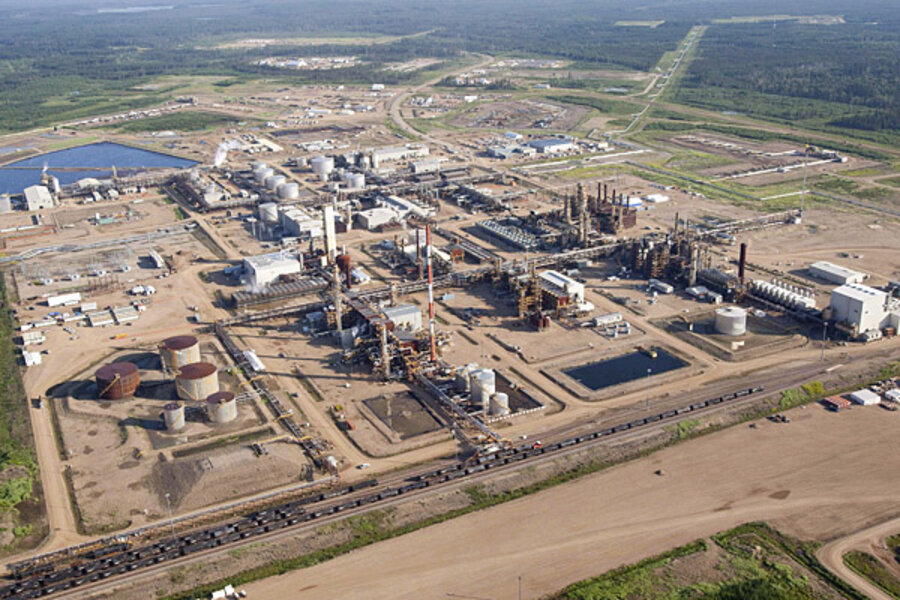Is the Keystone XL pipeline worth it?
Loading...
[Editor's note: This piece was updated on Feb. 28, 2013 to change "synthetic oil" to "synthetic crude oil" in the third paragraph.]
The Keystone XL pipeline has garnered support from the governor of Nebraska, more than half the US Senate and – as of Monday – the Business Roundtable, a group of prominent business leaders.
The pipeline would increase domestic production and give Canada open access to world energy markets, the association of chief executive officers of leading US companies said in a report Monday.
Although major business leaders support the pipeline, it's not so clear that they would invest in it. The Keystone XL pipeline, which would carry synthetic crude oil from Canada's tar sands to Texas refineries, is vulnerable to a downturn in oil prices. The crude it carries has smaller profit margins than conventional oil or even so-called tight oil from shale formations.
So while those tar sands (also known as oil sands) make money at current prices, it's outlook is more iffy if oil prices fell – or if a big carbon tax was enacted.
The reason is that tar sands projects have to consume a lot of energy to create energy. Using an energy accounting method called "energy return on energy invested" or EROEI, economist Robert Rapier at Consumer Energy Report has calculated that tar sands have an EROEI of 2.9/1. That means it takes a gallon of gasoline to create 2.9 gallons of gasoline. By contrast, a conventional light, sweet oil well can create about 6 gallons of gasoline for every 1 gallon of gasoline is uses.
Their break-even point is somewhere between $60 and $100 a barrel, according to Wood Mackenzie, an Edinburgh-based energy consultancy. The range is so wide because it depends on the extraction method and scope of the tar sands project.
With West Texas Intermediate crude trading above $90 a barrel so far this year, the prospects look encouraging. But when prices briefly tumbled below $80 a barrel last summer, it tested the resolve of investors backing tar sands projects and put the future of some projects in question. It was a reminder of the uncertain economics of tar sands production.
“Oil sands projects display some of the highest break-evens of all global upstream projects,” according to a June 2012 report by Wood Mackenzie. “The potential for wide and volatile differentials could result in operators delaying or cancelling unsanctioned projects.”
Writing in the Motley Fool last October, Aimee Duffy warns of the rising production costs and dropping oil prices, but says there is still promise in Canada's oil sands.
"Canada is still a very strong market, with plenty of potential," Duffy wrote. "However, these are real risks that should be monitored, and investors must be careful banking on an industry that isn't as straightforward as perhaps it has been in the past."






